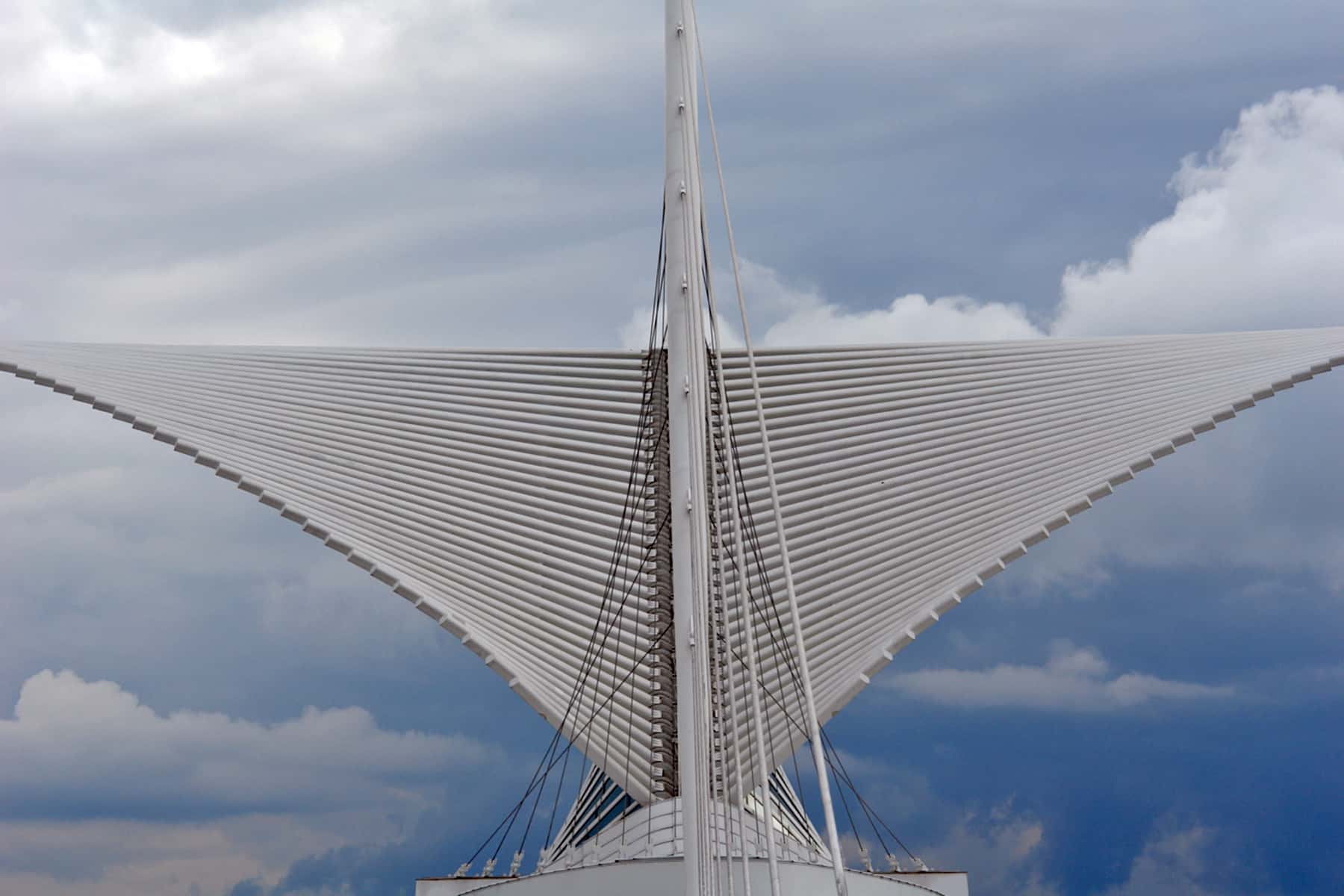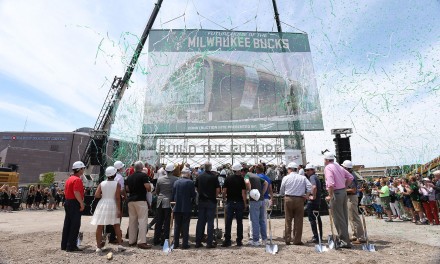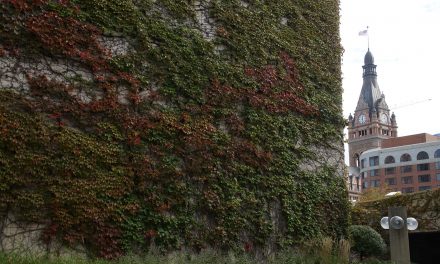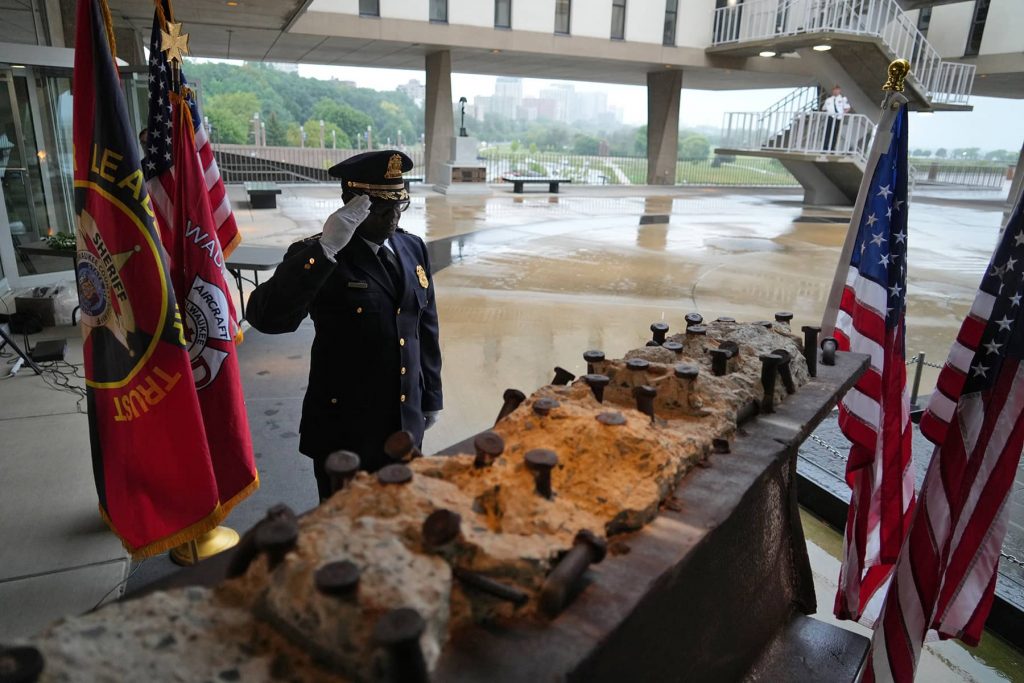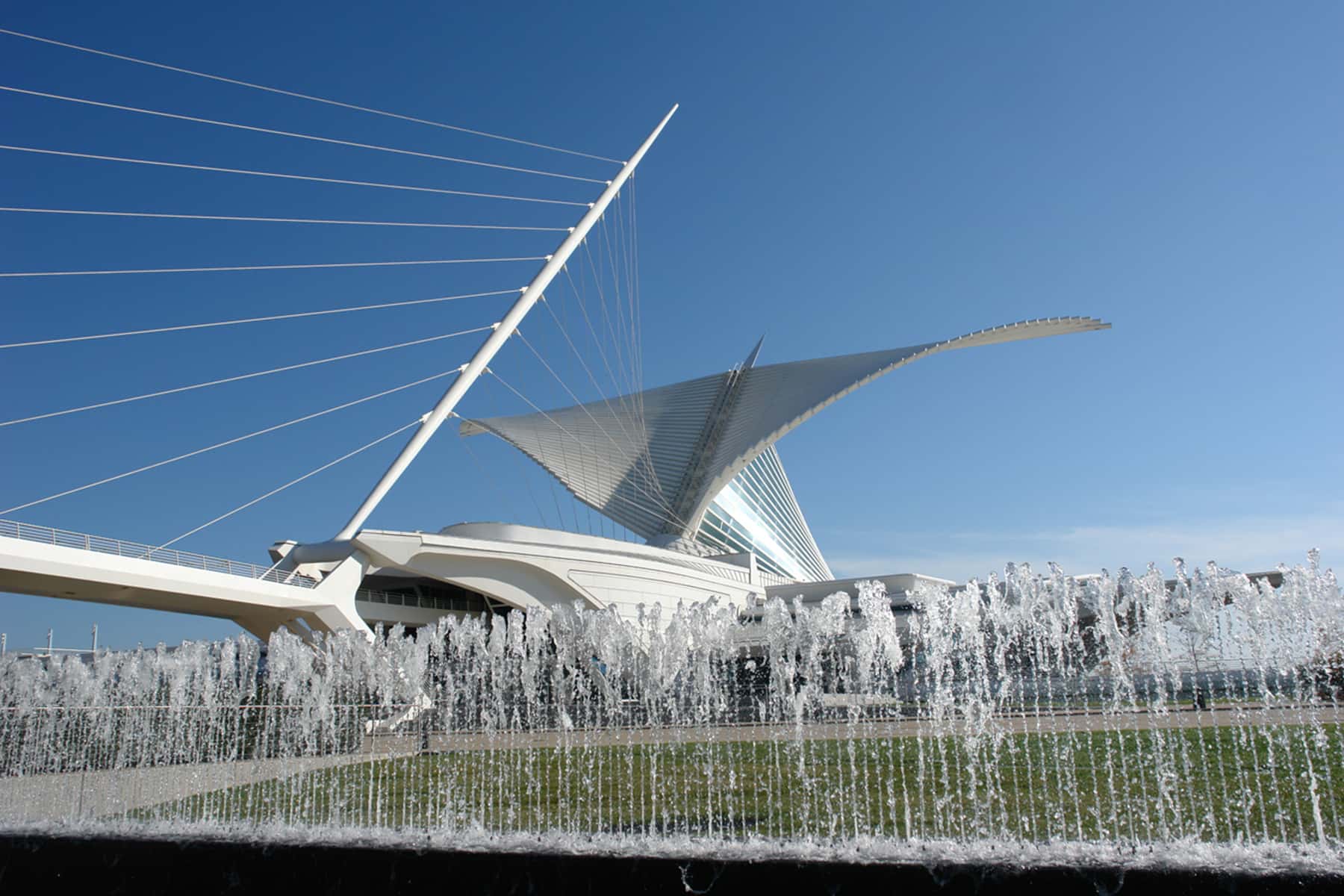
The Milwaukee Art Museum is commemorating the 20th anniversary of its acclaimed Quadracci Pavilion addition, designed by internationally recognized architect Santiago Calatrava.
Since the building’s construction and dedication in 2001, the movable Burke Brise Soleil “wings” that tops the cathedral-like glass ceiling of Windhover Hall has become an iconic symbol of Milwaukee, drawing visitors from around the world to the Museum and the city.
“The ‘building with the wings’ or ‘the Calatrava’ is, I’m certain, how many of us hear people refer to the Milwaukee Art Museum,” said Marcelle Polednik, PhD, Donna and Donald Baumgartner Director, Milwaukee Art Museum. “The Quadracci Pavilion is an incredible work of art itself that evokes awe, and the community has embraced it as a focal point for the city in the past two decades. It truly is a special place that offers sweeping views of Lake Michigan, with much more great art inside—a space for the community to gather, where people can find connection and inspiration.”
At the building’s formal dedication in October, 2001, Calatrava described that he was inspired by the “dramatic original building by Eero Saarinen … the topography of the city” and Frank Lloyd Wright’s Prairie-style architecture. According to Calatrava, his design “responds to the culture of the lake: the sailboats, the weather, the sense of motion and change. In the crowning element of the brise soleil, the building’s form is at once formal (completing the composition), functional (controlling the level of light), symbolic (opening to welcome visitors), and iconic (creating a memorable image for the Museum and the city).”
The Quadracci Pavilion dynamically and significantly expanded the Museum’s footprint with the addition of a main exhibition space, the Baker/Rowland Galleries, and gathering spaces for large-scale events, including weddings and corporate events. Above these spaces stands a 90-foot-high glass-walled reception hall topped by the Burke Brise Soleil and a 217-foot-wide sunscreen that can be raised.
The Reiman Pedestrian Bridge reaches across Lincoln Memorial Drive, directly connecting the Museum to downtown Milwaukee. The building has also played a prominent role in popular culture as a filming site for Transformers 3: Dark of the Moon, American Idol, and numerous commercials and media appearances.
At the time of the opening in 2001, then-Milwaukee Art Museum Board President Donald Baumgartner emphasized that the end result of the expansion was yet to be realized.
“We have just begun to see how the Quadracci Pavilion has put Milwaukee on the map. As MAM becomes more and more of a destination, it will continue to spark a renewed sense of pride and serve as a catalyst for Milwaukee to become a progressive cultural center. That will be a great legacy to all of those who have made our beautiful winged Museum a reality,” said Baumgartner.
Over the past two decades, that dream has taken shape as the Museum has held important exhibitions and programming, become an iconic part of the Milwaukee skyline, and continues to build deeper community roots.
“The positive impact of the Museum as an institution in Milwaukee and beyond is remarkable, and our family was honored to help bring about the building of this iconic work of architecture, expanding the Museum campus and the spaces available for the community and all visitors,” said Joel Quadracci, Milwaukee Art Museum Board President, 2018-2021. “It has been incredible to see the building become a symbol for the city, and I am excited to see what comes next, for our Museum and for Milwaukee.”
Santiago Calatrava first established his reputation as a preeminent architect and engineer with a series of bridges designed for cities around the world including Barcelona, Buenos Aires, and Jerusalem. The Quadracci Pavilion design for the Milwaukee Art Museum introduced Calatrava’s elegant forms to the American cityscape, and was his first building completed in North America.
© Photo
Lee Matz

